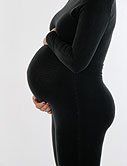Aortic Dissection Rare in Pregnancy With Bicuspid AV
Aortic dissection is rare in women with biscuspid aortic valve (BAV) who are pregnant, according to a study published in the January issue of The American Journal of Cardiology.

FRIDAY, Jan. 28 (HealthDay News) -- Aortic dissection is rare in women with bicuspid aortic valve (BAV) who are pregnant, according to a study published in the January issue of The American Journal of Cardiology.
Stephen H. McKellar, M.D., of the Mayo Clinic in Rochester, Minn., and colleagues searched an echocardiographic database of women who had been diagnosed with congenital BAV between 1980 and 1999. They reviewed medical records for end points of aortic valve replacement (AVR) and aortic dilatation, dissection, or surgery, and conducted a survey to determine obstetric history and further outcome. The researchers identified 88 women with BAV, with total obstetric histories consisting of 216 pregnancies and 186 deliveries, and no aortic dissections. During a median of 12.3 years of follow-up, 24 patients had AVR, three had ascending aortic surgery, and seven had both. Pregnancy was not related to dilatation of the aorta, aorta surgery, or AVR. At echocardiographic diagnosis of BAV, 6 percent of patients had aortas more than 40 mm in diameter; of 60 patients with comparison echocardiograms at a median of 10.7 years of follow-up, 35 percent had aortas over 40 mm in diameter. "Pregnancy is, in our view, reasonable to undertake if the aorta is ≤4.5 cm in diameter with rigorous blood pressure control and careful echocardiographic follow-up to identify any progressive aortic enlargement," the authors write.
Abstract
Full Text (subscription or payment may be required)
S1E4: Dr. Kristina Adams-Waldorf: Pandemics, pathogens and perseverance
July 16th 2020This episode of Pap Talk by Contemporary OB/GYN features an interview with Dr. Kristina Adams-Waldorf, Professor in the Department of Obstetrics and Gynecology and Adjunct Professor in Global Health at the University of Washington (UW) School of Medicine in Seattle.
Listen
Study shows a healthy prenatal diet could be upstream obesity prevention strategy
December 26th 2024"Our findings support the recommendation of a healthy diet based on the current guidelines (as measured by the HEI) during pregnancy, since it may reduce patterns of infant growth outside reference ranges."
Read More
Early pregnancy cannabis use high in states with recreational legalization
November 11th 2024A population-based time-series analysis California before, during and after legalization show a rising trend in women using cannabis while pregnancy especially when the state has legalized the drug.
Read More
